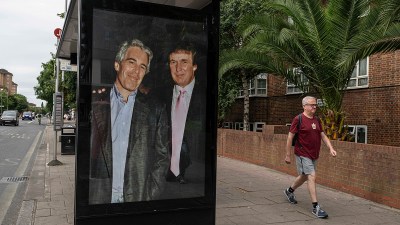US President Donald Trump has signed an executive order which requires that companies hiring overseas talent through the H-1B visa pay $100,000 a year for each H-1B worker visa, a move which will impact tech companies who have come to rely on hiring skilled people from India and China.
Until now, H-1B visas have carried various administrative fees totalling around $1,500. The move comes after the H-1B visa was criticised by several in the Trump administration over its alleged misuse by companies to hire cheaper talent from abroad rather than employing American nationals. For Trump himself, the onslaught on the H-1B visa has become a key point of his broad immigration policy.

The executive order signed by Trump, said that the H-1B visa “has been deliberately exploited to replace, rather than supplement, American workers with lower-paid, lower-skilled labor”. The order will come into effect from September 21.
Story continues below this ad
According to US government data, the greatest beneficiary of the programme the previous fiscal year was Amazon, followed by tech giants Microsoft, Meta, Apple and Google, according to government statistics. Several Indian IT services companies such as Infosys, Tata Consultancy Services (TCS), Wipro and Tech Mahindra also hired thousands of workers through the H-1B visa last year.
Reuters reported that Microsoft has already sent an email to employees on the visa, asking them to return to the US immediately. It has also asked employees who are currently still in the US to remain in the country for the foreseeable future.
In another order, Trump set up a new “gold card” to fast-track visas for certain immigrants in exchange for fees starting at $1 million.
How realistic are the concerns on H-1B?
The executive order said that the number of foreign STEM workers in the United States has more than doubled between 2000 and 2019, increasing from 1.2 million to almost 2.5 million, while overall STEM employment has only increased 44.5% during that time. Among computer and math occupations, the foreign share of the workforce grew from 17.7% in 2000 to 26.1% in 2019, and the key facilitator for this influx of foreign STEM labour has been the “abuse” of the H-1B visa.
Story continues below this ad
Information technology (IT) firms in particular have “prominently manipulated” the H-1B system, it added. “The share of IT workers in the H-1B programme grew from 32 percent in FY 2003 to an average of over 65 percent in the last 5 fiscal years… To take advantage of artificially low labor costs incentivized by the program, companies close their IT divisions, fire their American staff, and outsource IT jobs to lower-paid foreign workers,” it said.
Earlier this year, United States Commerce Secretary Howard Lutnick called the popular H-1B visa program a “scam that lets foreign workers fill American job opportunities,” adding that hiring American workers should be the priority of all US businesses. The US administration has signalled significant overhaul of the visa program, which involves a lottery-based allocation. Immigration is one of the most polarising subjects in the US currently, with the discourse now shifting from illegal immigration to programmes like the H-1B system.
While there is some truth in that, data collected by the non-profit American Immigration Council (AIC) showed that H-1B workers do not earn low wages or drag down other workers’ wages. In 2021, the median wage of an H-1B worker was $108,000, compared to $45,760 for US workers in general. Moreover, between 2003 and 2021, the median wage of H-1B workers grew by 52 percent. During the same period, the median wage of all US workers increased by 39 percent.
Supporting the argument that the visa has immensely helped American companies, AIC said that between FY 2010 and FY 2019, eight US companies that would later participate in the development of a COVID-19 vaccine—Gilead Sciences, Moderna Therapeutics, GlaxoSmithKline, Inovio, Johnson & Johnson Pharmaceuticals, Regeneron, Vir Therapeutics, and Sanofi—received approvals for 3,310 biochemists, biophysicists, chemists, and other scientists through the H-1B program.
Story continues below this ad
US President’s former aide and tech mogul Elon Musk has also come in support of the H-1B programme.
How Indians have benefited from the H-1B visa
People born in India are the largest beneficiaries of the H-1B program. Data from the US government show that Indians account for more than 70% of all H-1B petitions approved each year since 2015. People born in China come a distant second, hovering at the 12-13% mark since 2018.
Between October 2022 to September 2023, 72 per cent of the nearly 4 lakh visas issued under the H-1B program went to Indian nationals. During the same period, top four Indian IT majors with a presence in the US–namely Infosys, TCS, HCL, and Wipro–got approval for around 20,000 employees to work on the H-1B visa, as per latest US Citizenship and Immigration Services (USCIS) data.
A senior government had earlier told The Indian Express that the H-1B visa has inevitably helped American companies the most, and it could be difficult for them to find equally skilled American people.
Story continues below this ad
“It could certainly limit access for Indian workers in the US, leading to fewer IT companies here getting US based contracts which could contract their revenue. But the visa has immensely helped American companies in finding the right workers across the world, and whether they can substitute that with American people is not clear. Certainly it’s not an easy change and despite all the political signalling, the reality is that the visa helps American companies the most,” the official had said.








































